Jelena Jordanovic-Lewis' Artistic Process
October 29th, 2019
In my process I take a very methodical approach with a lot of preparations. I really always take the same steps: read the manuscript, draw a story board, develop the scenery and composition of each page, find a colour palette for each page, do the character design, draw first roughs, and complete the final paintings. I prepare using digital tools and finish off the pages digitally too, but for the first roughs and final paintings I use traditional media; water colours and coloured pencils. These are just my favourite tools, although I would like to try a complete digitally painted book too.
During the process, I get feedback from Little Steps and the Author. I can't say which step is my favourite one, as they all are very creative processes in finding how to tell the story best. The hardest one is the composition of a page, I think, because it is about creating the right atmosphere for the story and about guiding the eye through the picture. I start with deciding what the focus point of the picture should be, and that is usually said in the text, and then I try create a background that has natural lines that lead to the focus point. To have some flexibility, I paint characters and backgrounds separately and put them together on Photoshop. This way I can reposition things even if we are close to the end of the project, if I need to change the composition.
1. Research: I prepared for the book by experimenting with strong colours. I needed to find the right drawing style. These are some preliminary studies I did.
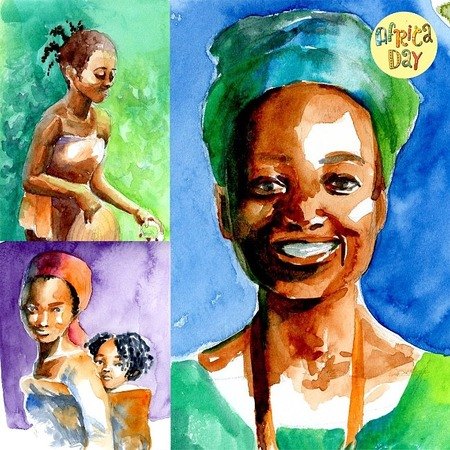
2. Character design: For Africa Day, I wanted the characters of the book to have realistic facial features according to their ethnicity, so I spent a lot of time studying portraits of people from Africa. Here are the pencil studies I did. Here is the boy Emeka, who explores the culture market and his heritage. His appearance changed slightly later in the project. Here is also Emeka's mum, with on of the Ankara patterns I designed for the book.

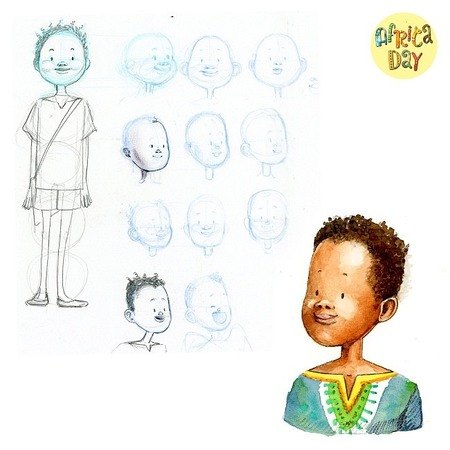
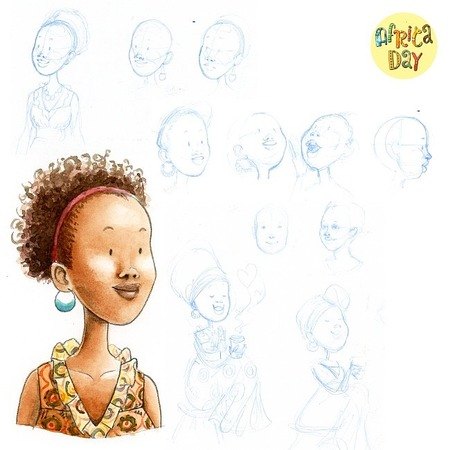
3. Story board and composition: Here is an example of how I translate the composition study into a painting. The story board is an overview of the content of the book. When I work on the story board, and how each page should look like, I also test different compositions of the same passage in the text. I try the view from different angles and different arrangement of the foreground and background. This sequence of pictures are all for the same double page.
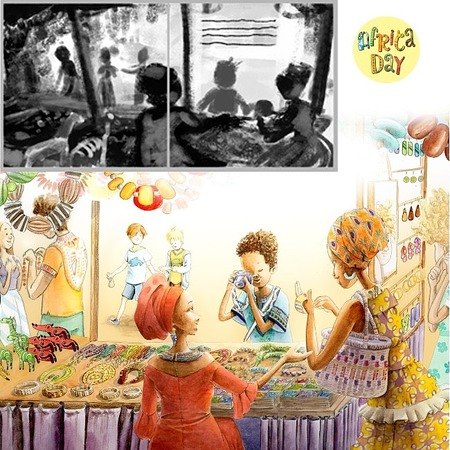
4. Pattern design: The book takes place at the culture market on Africa Day. Strong colours and powerful patterns are one of the signature feature. I designed some patterns inspired by the famous Ankara pattern just for this book. I used a digital trick to dress up the main characters in Ankara pattern, so that I don't have to paint the same pattern in water colour again and again. I painted the samples flat and then manipulated and formed to follow the lines of the clothes. Drawing the patterns freestyle felt a bit like painting mandalas. It was very relaxing and one of my favourite jobs with this book.
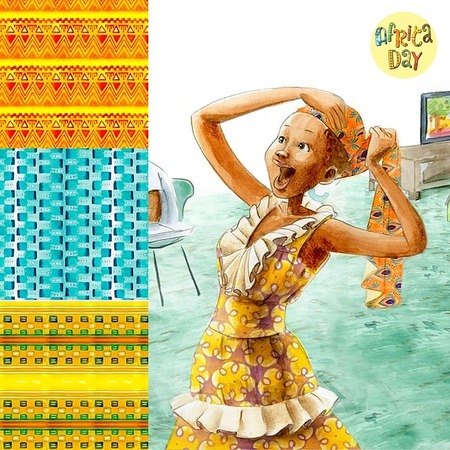

5. Digital Post Production: I use photoshop for correcting a composition, adding backgrounds, putting on filters and highlights or extras. In this picture, I knew it would take a long time to create a convincing water colour painting of a sunset, so I focused on painting the characters only and then added my self-made background textures later. You can also see how much the composition changed. This happens sometimes, when I don't have quite a good enough idea for that page while making the storyboard, but the time constraints force me to move on.
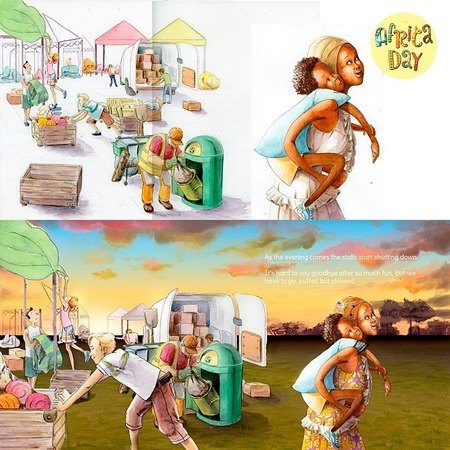
6. Cover Design: I approached the cover desgin very methodically this time. I summarized the main elements of the book into 2-3 bullet points: African culture, busy market, boy explores. Then I looked at famous movie posters and sketched many many different samples. In the end I picked these six example covers. In the second photo, you can see how I started with the background of the front cover.
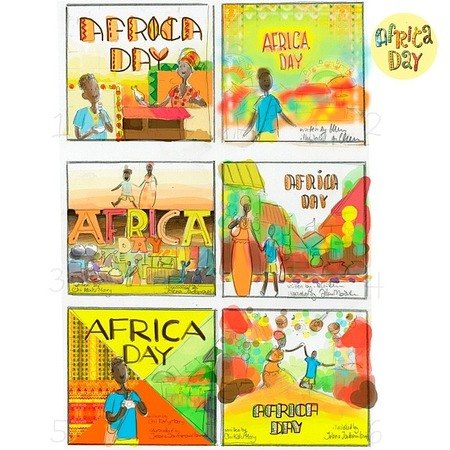
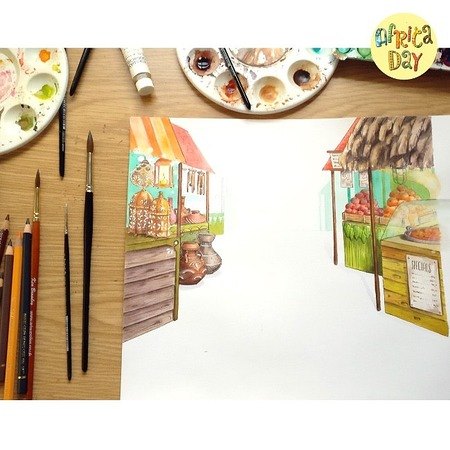
7. Colour palette for the book.
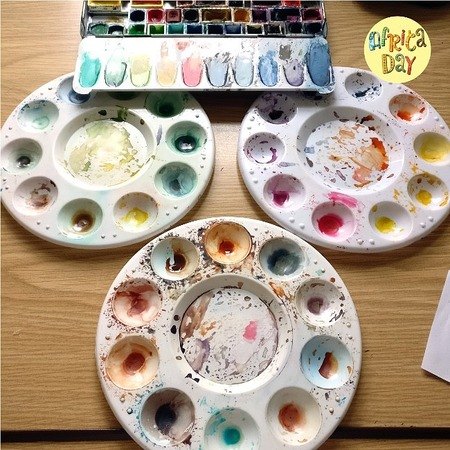
8. Delivered, not perfect: A big project needs finishing, and experience tells me that the more you correct the more you get stuck with perfection. When I am almost finished and am only left with the last bits of the project, I collect all the "need to do" bits in a list and then treat the list as its own project. This gives it the "first day, fresh start" feeling, and I don't get stuck in overthinking.
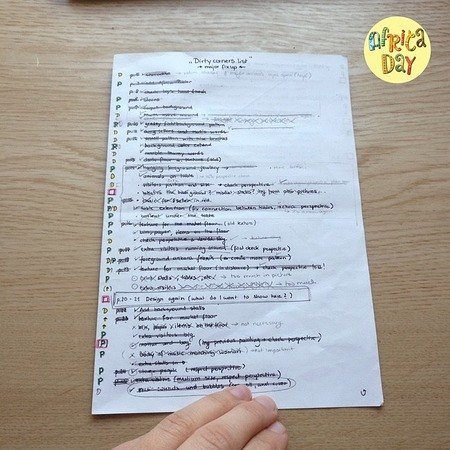
9. Workflow: This is how I stay on top of my tasks during a long project like this. There is the story board, the font for fun, the colour study chart, and the roughs with a list of elements that need painting, which I can tick off when finished. Every week, I count the new ticked boxes and see if I met my target count. 10 is great, 8 elements is good.

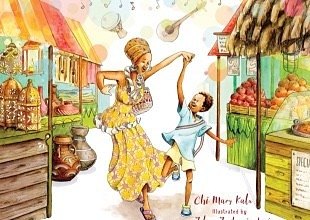
Africa Day
A little boy and his mum discover many colourful, fun and exciting things when they attend the Africa Day Festival.
find out more
find out more
Comments (0)
No comments have been submitted yet.
Why not be the first to send us your thoughts
Leave A Comment
Thank you for your comments,
they will appear shortly once approved.
TOPICS
RECENT POSTSHAVE YOU SEEN...1
Billy Bear's Brown Hair by Dina O.NasrSeptember 25th, 20252
The Slug Who Flew by Daniel CouzensSeptember 25th, 20253
Hannah Welch - Some Brothers and Some SistersSeptember 25th, 20254
Meet Wendy Goucher, author of Eesha and the Mud Monster MysteryMarch 11th, 20245
Ride the latest wave with Samantha Bell, author of The Girl Who Saved the Ocean.April 21st, 20231
Meet and Greet - Introducing the Kids to Your Partner for the First Time by Rachel BraceJuly 28th, 20212
Top Tips on How to Write a Junior Fiction/Middle Grade BookJuly 30th, 20213
Meet Chi Mary KaluOctober 29th, 20194
Get to Know Beverly Jatwani, Author of Pedro the Puerto Rican Parrot!May 5th, 20215
Inside the Inspiration for The Great Guinea Pig Adventures with Hollie SmithNovember 24th, 2021